Bird Photography for a BirderText and photography copyright Bob Steele and Garth McElroy. All rights reserved.
Bird watching, or “birding” as it is known by those who participate, is one of the fastest growing, and most participated in, outdoor recreation activities in the U.S. Millions of Americans participate in birding at some level, some quite fanatically. Birders are quite serious about it too, spending millions of dollars each year on equipment and travel. Most serious birders subscribe to several magazines published specifically for the activity. There are hundreds, if not thousands of websites world wide that cater to birders. Additionally, many other general nature magazines, calendars, and websites have birds and bird watching as part of their content. Then there are the books. Look at any serious birder’s library and you will typically find dozens of reference volumes on bird finding, bird identification, and ornithology (the scientific study of birds). Software in the form of CDs have become very popular for bird identification. Each of these forms of publication can contain many bird photographs. For some bird photographers, it is this market that defines a shooting style.
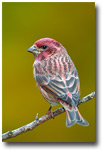
Copyright Garth McElroy
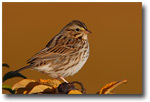
Copyright Garth McElroy
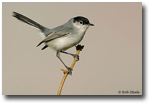
Copyright Bob Steele
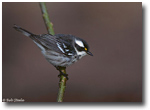
Copyright Bob Steele
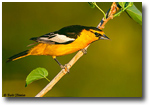
Copyright Bob Steele
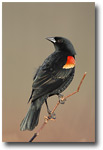
Copyright Garth McElroy
|
|
Photography in its purest sense is an artistic medium. Bird photography in many respects is no different, with the largest percentage of bird photographers interested in taking photographs that express their artistic talents and the beauty of the avian form. But for those who take images for the birding market, a somewhat different style is often used. This style often requires the bird to be the main aspect of the image; that is, a profile shot of a bird, in an open setting, with very few other compositional elements. It is in this market where the “bird on a stick” style of photography shines.
Each species possesses distinct physical attributes that are examined to determine an individual’s identification. Plumage, molt patterns, bill structure, and behavior are often needed to make a correct ID. Often, several of these features need to be confirmed to make the correct identification. Many articles written about birds revolve around identification and thus need images that show these points clearly. If you have ever witnessed a group of birders peering through a spotting scope in the field, pointing out minute plumage differences, you know how seriously a correct ID is taken. A good birder will look at every aspect of the bird for as long as possible in order to make a definitive ID. Having a photograph that illustrates these attributes and offers a comparison to similar species can be invaluable to a birder. Other types of images should be in your files to compliment the ID types of images too. Birds at feeders, birds in habitat, flight shots of species typically seen in flight, habitat shots of popular birding locations, and people out birding are all images that a well rounded “birding” photographer would have in their files.
It’s not just having a few good images of a species in your files however. To compete in this market, you must be very diverse in your image files – extensive coverage of a large number of species. The sheer number of bird species in the world is staggering. More than 10,000 species have been identified world-wide, with over 900 occurring in North America (north of the Mexico border). Photographing the highest number of species will increase your chances in the market. It’s also very important to photograph the same species at different times of the year. Birds typically have a basic and an alternate (non-breeding and breeding) plumage. Photographing both these plumages, and even when the bird is molting, will increase your chances of fulfilling an editor’s need. A drab looking fall warbler in basic plumage can be even more desirable than a beautiful spring adult simply because they are often overlooked due to their dull appearance.
Many times habitat is also critical for correct identification. Most birds need certain types of vegetation or geographical features in order to breed successfully. Taking pictures of a bird’s surroundings is often overlooked by many aspiring bird photographers.
Some species have separate subspecies that look very different and use different habitats, often due to geographical location. Take, for example, the Dark-eyed Junco. At least six different subspecies of this bird occur throughout North America. While they are all technically the same species, each one looks different. Having shots of all these subspecies, and the habitat that they occur in, would increase publication chances for the photographer by a considerable amount.
Competition in this market is fierce. A number of very accomplished photographers have spent many years building their files with extensive species coverage and beautiful images. Just a few of the top pro photographers in this field include: Brian E. Small, Tom Vezo, Kevin T. Karlson, Mike Danzenbaker, and Maslowski Wildlife Productions (Steve, Dave and Karl Maslowski). Besides being some of the best in the field of bird photography, these guys know birds. Each is an expert birder and naturalist. It is a lesson well learned – know your subject well and you’ll be much better prepared to get those great images.
Do you have to be a professional, or have publications intentions, to apply this style of bird photography? Definitely not! Many amateur photographers, and serious birders, photograph in this style to use for their own birding education, to assist with identification, and to share with other birders. It can be an extremely rewarding part of a birding hobby.
No doubt about it, bird photography for the birding market is a specialized endeavor with its own unique requirements. Often, purely “aesthetic” attributes such as dramatic lighting, unusual poses, motion blur, creative compositions, etc., that may be beneficial from a strictly artistic aspect, can be detrimental to the goal of rendering the subject clearly and the final image as valuable as possible for this niche market. This is truly the challenge and the joy of bird photography for birders – to capture images that clearly depict and aid in the identification of these small and elusive subjects that millions around the globe enjoy observing in the field.
Editor’s Note - Thumbnails are links to larger images, presented in slide show format.
BS-NPN 0252
GM-NPN 0459
Comments on NPN bird photography articles? Send them to the editor.


| 


